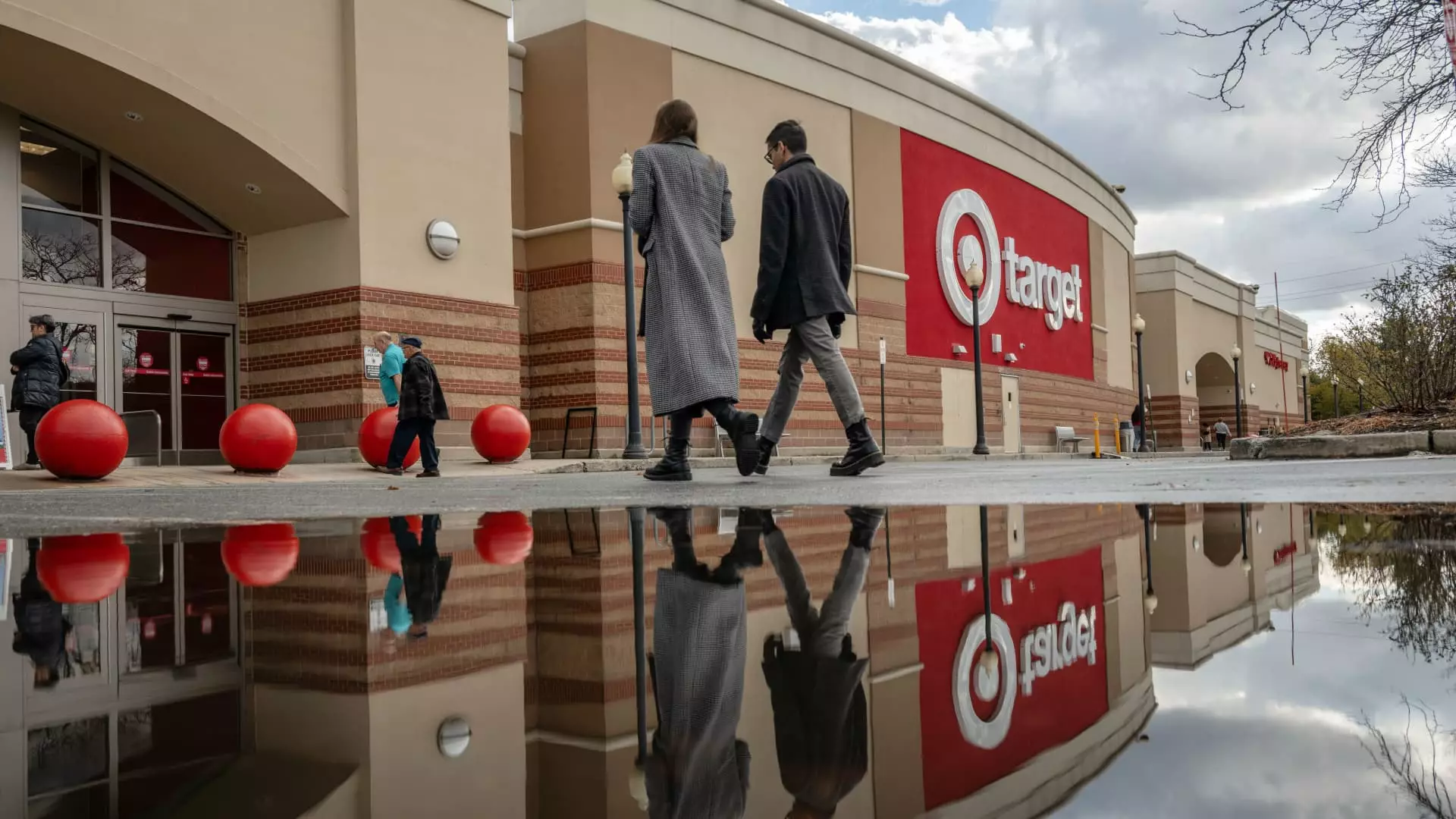As the holiday season approaches, retailers find themselves navigating a complex landscape filled with both opportunity and uncertainty. With consumers often ready to spend on gifts and festive attire, the potential for extravagant sales exists; however, not all businesses are reaping the benefits. Recent earnings reports have revealed a significant divide among retailers, highlighting the winners and losers of the current market. While giants like Walmart and Dick’s Sporting Goods posted impressive gains, others like Target and Kohl’s struggled and posted disappointing results. This divergence illustrates the challenges faced by some retailers, particularly as they seek a share of consumer spending in a post-pandemic environment.
The ongoing effects of prolonged inflation have shifted consumer spending patterns. A focus on necessities, driven by rising costs for groceries and other essentials, has made consumers more selective about their discretionary purchases. Retail analyst Neil Saunders pointed out that although people are still shopping, they are opting for fewer items—choosing to purchase three products instead of five, a clear indication of changing priorities. This newfound prudence has led to an environment where consumers readily abandon lesser-known brands in favor of more admired names—those retailers with established reputations for quality and value are more likely to capitalize on holiday spending.
According to forecasts from the National Retail Federation, holiday spending is expected to rise by only 2.5% to 3.5% in comparison to last year, translating to a total range of approximately $979.5 billion to $989 billion. This projection, while indicating growth, marks a slower pace relative to last year’s robust 3.9% increase in holiday spending, demonstrating a noticeable cautiousness among consumers and a restrained approach to holiday shopping in the face of economic uncertainty. The figures, excluding automobile dealers and gasoline stations, underline the necessity for retailers to be strategic and innovative in attracting foot traffic and online visits during this crucial shopping period.
Interestingly, the optimism surrounding the holiday shopping season varies considerably among retailers. Companies like Dick’s Sporting Goods and Abercrombie & Fitch have raised their forecasts, eager to validate their assertive inventory strategies and engagement with consumer desires. Abercrombie’s COO expressed confidence in their holiday plans, noting a strong early response to product offerings. However, not all retailers share this bullish sentiment. Chief executives from Nordstrom and Walmart noted a cautious stance as they observed trends of reduced shopping activity heading into November, reflecting an awareness of the delicate balance that must be struck between enticing prices and consumer hesitance. While overall spending may be on an upward trajectory, the emphasis remains on delivering the right products at the right prices to stimulate interest in a competitive landscape.
Inventory management strategies are often the double-edged sword retailers must navigate. Some, like Kohl’s, may find themselves stuck with excess inventory that might not resonate with shoppers’ current preferences. Retailers must now analyze which products appeal to today’s consumer, focusing on practical gifts and experiences rather than novelty items that are often viewed as superfluous. As the holiday shopping kicks into high gear, it is crucial for retailers to accurately predict what their customers want and avoid the pitfall of overordering irrelevant or unnecessary items.
Marshal Cohen, a chief retail advisor, articulates that the guiding principle for success this holiday season will be value—not merely lower prices, but a compelling perception of “the best bang for the buck.” Retailers will need to curate selections that resonate with consumers through novelty and quality, positioning themselves effectively against the backdrop of inflation and competition. As they strategize marketing campaigns and promotional efforts, retailers must be acutely aware of external factors and potential pitfalls that could derail their projections, demonstrating a proactive stance to reassure consumers of product value and affordability.
As the holiday season unfolds, retailers face an uphill battle. The duality of spending behaviors—among both consumers and businesses—will dictate success. The challenge lies not only in enticing shoppers but also in understanding the evolving preferences that shape their purchasing decisions. Companies must adapt, employing strategies that promote value without compromising quality to foster loyalty. The holiday shopping landscape is far from straightforward; it demands that businesses remain agile and perceptive in a swiftly flipping retail environment characterized by a consumer base that is both hopeful and discerning. Successfully navigating this terrain might be the difference between thriving and struggling in an increasingly competitive market.

